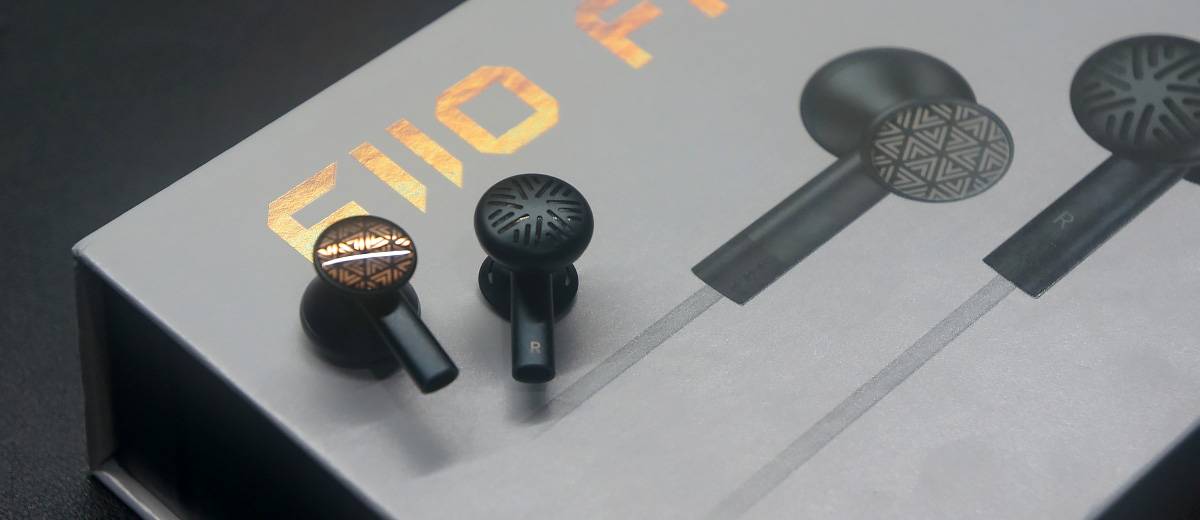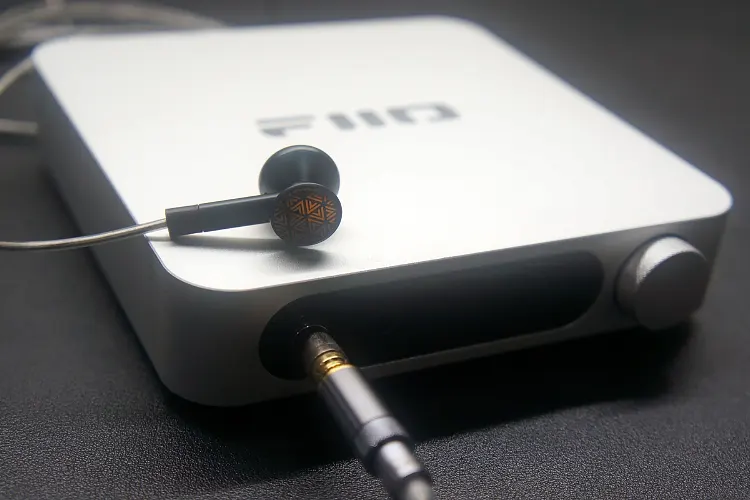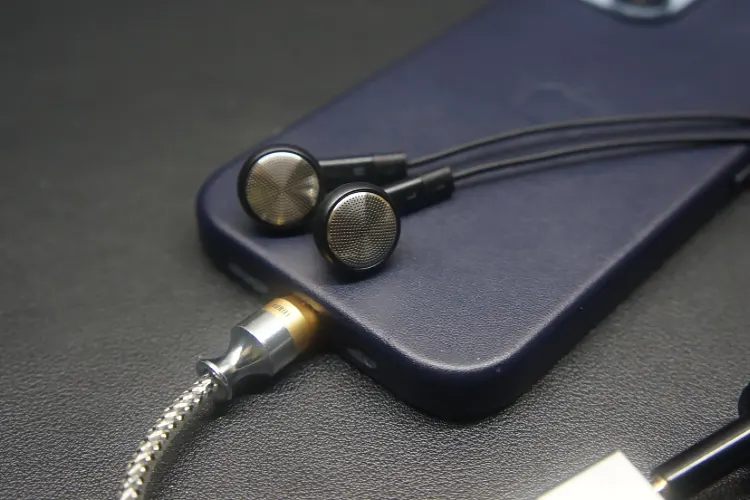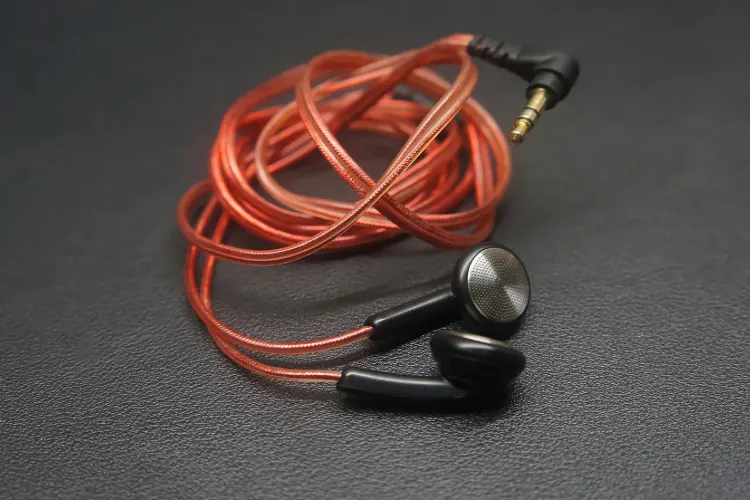Synergy
Efficiency
The FF3S has an impedance of 45Ω and a sensitivity of 105 dB/mW, meaning it is not very sensitive or hard to drive. The earbud can be powered by most sources, such as a laptop or a dongle DAC.
However, there is a slight observable improvement in staging and dynamics when driving the FF3S with more powerful desktop units such as the FiiO K11.
In my testing, my daily driver ddHiFi TC35Pro Eye2 lightning dongle sufficiently drove the FF3s, albeit not at the same staging and dynamics performance as it paired with the K11.
Pairings
The FF3S can pair well with a variety of sources, however, I found that the FF3S paired well with a neutral dongle DAC. This maintains the natural and warm tonality of the FF3S while ensuring that the inherent comfort benefits of the earbuds can be maximized with on-the-go listening.
I found that the ddHiFi TC35Pro 2 checked the boxes that I was looking for in a Dongle DAC to pair with the FF3s. I also tried the FF3S with the 7hz SEVENHERTZ 71, however, the additional warmth added by the dongle did not suit the already warm signature of the earbuds.
Despite not being the most practical combination, I enjoyed the staging and dynamics performance of the FF3S with the K11 and my Topping L30 II.
Select Comparisons
FiiO FF3
Technical
The FiiO FF3S and the FiiO FF3 share the same driver configuration: a 14.2mm beryllium-plated PU dynamic driver. Both earbuds have an impedance of 45Ω, as well as identical sensitivities of 105 dB/mW.
The main difference between the two models is that the FF3S has a detachable modular cable system, whereas the FF3 has a fixed cable with interchangeable 3.5mm unbalanced and 4.4mm balanced plugs.
Design
The FiiO FF3s is constructed out of aluminum with a sleek anodized black finish with slight hints of green, while the FF3 has a beautifully built stainless-steel shell with a thinner stem.
This gives the FF3 a more premium look, while the FF3S has a sleeker utilitarian look. Both IEMs make use of the same unique subtle tasteful geometric patterns on the faceplate of the earbuds.
The stainless steel build of the FF3 makes it heavier and less comfortable to wear. Weighing in at 31g without the cable, the FF3 is also significantly heavier.
Performance
The FF3S boasts a warm sound profile with a very subtle U-shaped tonality that lends towards neutrality, while the original FF3 adds warmth to a more typical V-shaped sound signature.
The FF3S has the better sub-bass performance whereas the FF3 has a more prominent mid-bass region, with more warmth and richness.
For house music, hip-hop, and modern pop, the deeper sub-bass of the original FF3 makes listening to it more exciting. However, I preferred the FF3S when listening to funk and trip-hop where key atmospheric layers on the mix are dependent on bass guitar riffs and synths.
The FF3s exhibit more mids prominence compared to the original FF3. I found that string instruments and female vocals were not only more forward with the FF3s, but that they had a smoother quality to them.
This, however, did come at the cost of worse instrument separation performance when compared to the original FF3.
The V-shaped sound signature of the original FF3 gives it an edge in energy and resolving capabilities. I occasionally found myself wanting more resolution from the FF3S, but its more laid-back presentation of high-end instruments made it an easier listen when trying to relax.
FiiO FF1
Technical
Both the FiiO FF3S and the FiiO FF1 share the same driver configuration: a 14.2mm beryllium-plated PU dynamic driver.
They also share the same 45Ω impedance benchmark, however, the FF1 has a slightly high SPL of 106 dB/MW compared to the 105 dB/mW sensitivity of the FF3, making the FF1 easier of the two earbuds to drive.
The main external physical difference between the two models is that the FF3S has a detachable modular cable system to select between a 3.5mm single-ended and a 4.4mm balanced plug. The FF1 does not have interchangeable terminations, it does come with an in-line microphone though.
Design
Compared to the sleek black aluminum build of the FF3S, the FF1’s black plastic shell makes it look like earbuds normally included with portable CD players and MP3 players from the early 2000s’.
The FF3S backplate has a unique subtle tasteful geometric pattern, giving it some aesthetic flare, while the FF1’s backplate just has a simple silver stripe with FiiO branding on it.
Both earbuds make use of the same semi-proprietary 0.78mm 2-pin connector because of their similar flat stems. Based on our testing, the stock cables between both earbuds were interchangeable.
Performance
The FF3S boasts a warm sound profile with a very subtle U-shaped tonality, while the FF1 has a neutral sound signature with a slight V-shape.
I found that both the FF1 and FF3S were quite lacking in the sub-bass region, with neither earbud being able to playback sheer slam the same way that the original FF3 did.
The FF3S had a greater sense of rumble and warmth in the lows. However, this did end up muddying the midrange, especially compared to the midrange performance of the FF1.
The midrange tonal balance and presentation of the FF1 are more neutral compared to the warmth presented by the FF3S. The FF1 can better articulate string instruments and female vocals, making it much easier to isolate each one from the other.
The FF3S adds warmth to male vocals and low-pitched string instruments, however, I found myself preferring the midrange performance of the FF1 in simple acoustic or vocal-focused tracks.
The treble performance of both earbuds is quite similar. The FF3S can deliver a better sense of sparkle and air, with better-resolving capabilities as well, but the FF1 was not far off.
By no means are either of these earbuds powerhouses in the highs. I found myself wanting more high-end resolution with both.
Venture Electronics ZEN LL
Technical
The FiiO FF3S makes use of a single 14.2mm beryllium-plated PU dynamic driver with an impedance of 45Ω. The Venture Electronics ZEN LL’s single dynamic driver has a much higher impedance of 150Ω.
The ZEN does have a higher sensitivity of around 109 dB/mW compared to the 105dB/mW of the FF1, but in practice, the ZEN LL is still harder to drive.
Unlike the FF3S, the ZEN LL comes with an attached cable, which is still of good quality, but I still much prefer a detachable cable.
Design
The FiiO FF3s is constructed out of aluminum with a sleek anodized black finish with slight hints of green, giving it a sleek utilitarian look.
It has a unique subtle tasteful geometric pattern, giving it some aesthetic flare whereas the ZEN LL has a much sleeker design, appearing less bulky and more comfortable.
The Zen LL’s thinner stem made it significantly more comfortable. The FF3S is by no means uncomfortable, but the ZEN LL is simply so comfortable that I found myself falling asleep in bed while having them in my ear.
Performance
The FF3S boasts a warm sound profile with a very subtle U-shaped tonality, while the ZEN LL leans towards a flatter, more neutral sound signature.
The FF3S’s bass delivery packs a punch, with a deeper rumble and infusing tracks with a richer warmth. In comparison, the ZEN LL’s bass feels comparatively lackluster, lacking the depth and warmth found in the FF3S.
Yet, this boost in bass on the FF3S can occasionally muddy the overall tonal balance, though it’s a marked improvement over the ZEN LL’s rather lackluster bass output.
The ZEN LL exhibits more prominence in the mids. However, it tends to veer towards a shouty quality, particularly noticeable in female vocals. This characteristic, accentuated by the ZEN LL’s neutral sound, draws attention to itself, leading me to prefer the richer midrange of the FF3S.
Thanks to its U-shaped sound profile, the FF3S shines in the highs department. Its treble is superior across the spectrum, offering better resolution, heightened excitement, and greater detail than the ZEN LL.
Our Verdict
Despite making use of the same driver on paper, the FiiO FF3S earbuds offer a more neutral-warm U-shaped tonality compared to the warm leaning V-shaped tonality of the original FF3. It also improves on the comfort and usability of the previous generation with a lighter build and a new detachable cable.
Without considering quality, the FiiO FF3S is an upgrade over the original across the board. However, those who were a fan of the V-shaped sound signature of the original and are expecting a mere quality-of-life upgrade may be left disappointed.
The value proposition of the FF3S would then depend on the listener’s preference for a more engaging V-shaped signature or a more relaxing warm-neutral signature.
FiiO FF3S Technical Specifications
- Impedance: 45Ω
- Frequency response range: 20Hz-20kHz
- Sensitivity: 105dB
- Termination plugs: 3.5mm/4.4mm
- Cable length: 120cm approximately
- Weight: 3.9g






